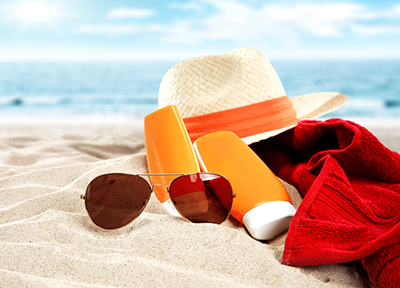By Jacqueline T. Norrell, DNP, RN, APN, FNP-BC, NP-C
 As we spend greater time outdoors throughout the year, we place ourselves at risk for over-exposure and cumulative, toxic effects of the sun that can eventually promote the growth of skin cancers. Skin cancer is one of the most common cancers in the United States. One in every three cancers diagnosed is a skin cancer, and one in every five Americans will develop skin cancer in their lifetime, according to the American Academy of Dermatology.
As we spend greater time outdoors throughout the year, we place ourselves at risk for over-exposure and cumulative, toxic effects of the sun that can eventually promote the growth of skin cancers. Skin cancer is one of the most common cancers in the United States. One in every three cancers diagnosed is a skin cancer, and one in every five Americans will develop skin cancer in their lifetime, according to the American Academy of Dermatology.
Common risk factors for developing skin cancer include blue, green or hazel eyes, many moles, history of severe sunburns, and a family history of skin cancer. People of color can get sunburned, and the effects of ultraviolet (UV) radiation can damage their skin leading to the development of skin cancer. Adopting a common-sense approach to prevention through lifestyle choices that include sun-protective measures and limiting time outdoors will reduce your risk of developing skin cancer. Strategies to reduce the risk of skin cancer include:
Use of Broad-Spectrum UVA and UVB Sun-Protector
UVA and UVB rays penetrate the deep and outer layers of the skin and cause wrinkles, leathering, and other aspects of photo-aging. Use of a sun protection factor (SPF) of at least 15, will block 93 percent of UVB; SPF 30, 97 percent; and SPF 50, 98 percent.
Avoid Sunburns
Sunburns cause long-lasting damage from UV rays. Set a timer on your phone to avoid losing track of the time you spend in the sun. If you do get sunburn, cool your skin with water or cool compresses, cover up, moisturize and replenish with fluids.
Avoid Tanning Beds
Tanning lamps give out UVA and UVB rays, which can damage the skin and increase the risk of skin cancer. The risk for skin cancer increases 75 percent for people who use a tanning bed before age 35.
Perform Self-Skin Exams - Schedule Dermatology Exams
Regular dermatologic exams, and self-skin exams will help with early recognition of skin cancer. When performing self-exams, use the ABCDE method of mole/spot skin; A=asymmetry, B=border - irregular; C=color – not uniform, D=diameter – greater than 6mm, E=evolving – change in size, shape or elevation.
Prepare for Outdoor Activities
For road trips, gardening, and walking/hiking, consider a travel kit that contains a small bottle of sunscreen, wrap-around sunglasses (ANSI UV), and a hat (3 inch brim or greater all around). Avoid exposure to the sun when UV rays are strongest: 10am through 4pm. Stay in the shade. UV-protective clothing is also a great sun-protective option.
Jacqueline T. Norrell, DNP, RN, APN, FNP-BC, NP-C, is an Advanced Practice Nurse in the Melanoma and Soft Tissue Oncology Program at Rutgers Cancer Institute of New Jersey.
For journalists – contact:
Michele Fisher
Media Relations Specialist
732-235-9872
michele.fisher@rutgers.edu
For patient appointments/inquiries call 732-235-8515

